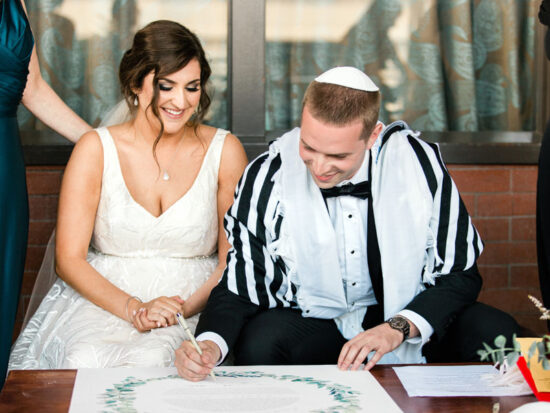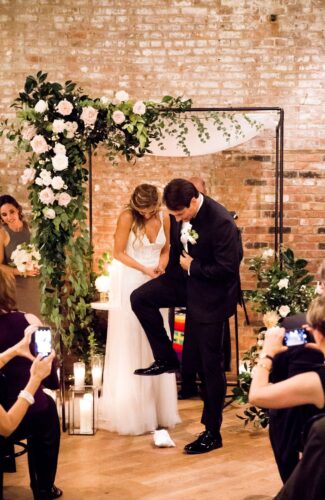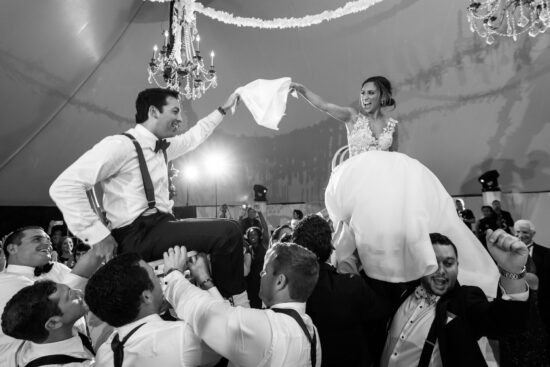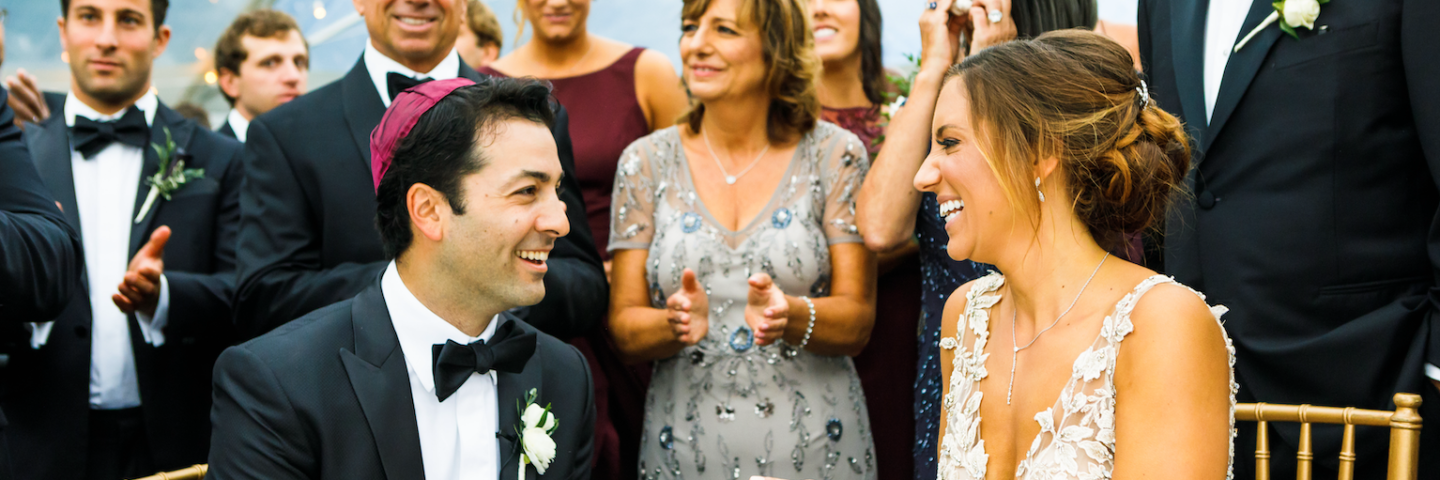Jewish Wedding Traditions You’ll Want To Know
Posted on
By: Maya Hettleman
Featured Image By: Jillian Jenkins
Celebrating love is universal, but that doesn’t mean that we all celebrate in the same way. At IMPACT Collective we know that there are many details that go into planning the perfect wedding for the traditions of your cultural and religious celebration. It is our goal to learn all that we can about all of the commemorations of love out there, and we want to bring you along on that journey! From the ceremony to the reception, there are so many beautiful traditions to celebrate in a Jewish wedding and we are so excited to share them with you.
What is a Chuppah?

The altar of a Jewish wedding is called the Chuppah (pronounced: Hu-pa). The structure represents the new home that the newly wedded couple will build together. The Chuppa is made with four corners and has a covered roof. Often the fabric covering the roof is a tallit (pronounced: tah-leet), a Jewish prayer shawl. In addition to the couple standing at the Chuppah, during the ceremony the parents of the newlyweds and the rabbi who leads the ceremony will stand there with them.
The Signing of the Ketubah

Before the ceremony can take place, the bride and groom must sign their ketubah (pronounced: keh-two-ba), a Jewish marriage contract. Traditionally, it is only the groom, the rabbi and two male witnesses who sign the document. However, it is common to add lines for the bride and two female witnesses. The ketubah considers the bride’s willingness to take part in her marriage and enables her to address her rights. Once the document is signed, the ketubah belongs to the bride. She keeps it as proof of her rights as well as the responsibilities the groom agreed to by signing.
Breaking of the Glass

When the wedding ceremony comes to an end, the groom (and many times the bride) declares the couple’s official union by stomping on and shattering glass inside of a cloth bag. There are many meanings to breaking the glass. The first being the destruction of the temple in Jerusalem and the other being that marriage changes the lives of both individuals forever. Once the glass has been broken, that is the guests’ sign to yell out “Mazel Tov!” and then from there the wedding celebration officially begins.
Mazel Tov and L’Chaim

Mazel Tov (pronounced Mah-zahl Toe-v) and L’Chaim (pronounced Leh-high-eem) are two common expressions of congratulations in Jewish tradition. Mazel Tov is a way of expressing congratulations and will definitely be heard far and wide at any Jewish event. Since the phrase also means “good luck”, it is the perfect way to wish a newly married couple the best. L’Chaim is a Hebrew toast that means “to life”, which you will certainly hear at any Jewish wedding reception any time someone raises a glass to celebrate the newlyweds.
Dancing the Hora

The hora is a traditional Jewish line dance, though it would really be more accurate to call it a circle dance. In circles, guests will grab hands and dance, first going clockwise to then counterclockwise so that every circle goes in the opposite direction of the other. The hora is arguably the most iconic element of a Jewish wedding as it is when the bride and groom, who are both on chairs, are hoisted into the air above their guests to the tune of Hava Nagila. No matter if it is your first Jewish wedding or your 50th, doing the hora never gets old.
We hope that this gives you a little more insight into the traditions of a perfect Jewish wedding. At IMPACT Collective, we strive to work with diverse cultures and embrace traditions that matter to our wedding clients. If there are wedding traditions, you’re looking to know more about let us know on Instagram @impact_collective. If you’re looking for the perfect planners for your upcoming wedding, click here to set up a consultation with us and learn about all the services we offer.
